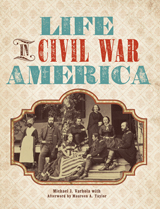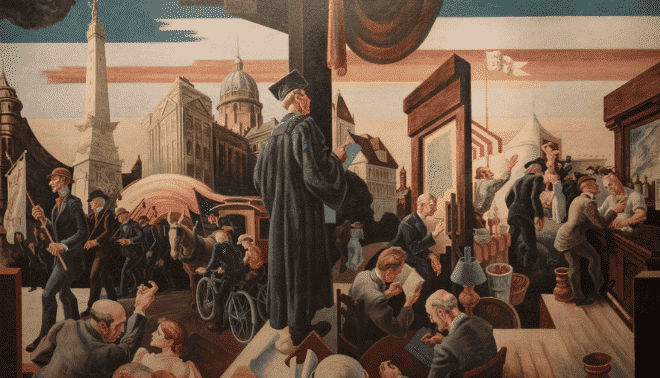Sign up for the Family Tree Newsletter! Plus, you’ll receive our 10 Essential Genealogy Research Forms PDF as a special thank you.
Get Your Free Genealogy Forms
"*" indicates required fields
The Civil War has captured the interest of people in the United States and beyond more than any other episode in American history. One reason for this fervent interest is, perhaps, the proximity of the war’s events to the everyday lives of so many modern Americans. People in Pennsylvania, Maryland, Virginia, North Carolina, South Carolina, Georgia and Washington, DC, drive on many of the same routes that massive armies marched along some 150 years ago.
For generations, American families also carried the memory of how the war affected their lives, through shortages, destroyed property, loss of a limb in battle, or loss of a brother, son or father in the war. Some 625,000 Americans were killed in the Civil War — more than all the US personnel killed in World War I, World War II, the Korean War and the Vietnam War combined.

ADVERTISEMENT
Retreat back to your ancestors’ day with these facts, figures and insights from Life in Civil War America (Family Tree Books).
Close to home
America wasn’t a widely urbanized country at the time of the Civil War, but as a result of the Industrial Revolution, its cities were multiplying and expanding. In the decades after the war, technology advanced rapidly, allowing farms to be tended by fewer people and creating more factory jobs in urban areas. These factors move the nation toward becoming an urban society.
Northern society was more urbanized than the South in the mid-19th century. Some 5.5 million Northerners were city dwellers, about a quarter of the 22 million people living in the Union states. Most of the balance, about 16.5 million people, lived in towns or villages or on farms.
ADVERTISEMENT
By contrast, only about 10 percent of the South’s population — less than a million people — lived in cities. The remaining 8 million Southerners lived in small towns and villages, and on plantations and farms. Southern cities tended to be smaller, less industrialized and less congested than urban areas in the North.
Housing costs varied widely from city to country and from North to South during the Civil War, as shown by the sample costs at left, taken from contemporary catalogs and publications.
Housing Cost in the Mid-1800s
- prairie-style farmhouse: $800 to $1,000
- large but modest farmhouse: $2,000 to $3,000
- larger, nicer farmhouse: $3,000 to $6,000
- large, extravagant country house: $3,000 to $14,000
Rent Cost in the Mid-1800s
- house: $500 per year (in areas affected by wartime housing shortages, this price was at least doubled)
- room and board in a boarding house: $30 to $40 per month (1862)
- furnished house: $80 per month (1863)
- third-story front room, without carpeting or gas for heat or light: $60 per month (1863)
- sleeping/dining room, plus use of parlor: $60 per month plus half the gas bill (1863)
- room and board in a rooming house: $50 or more per month (1863)
- furnished rooms: $25 to $110 per room, per month (1864)
- rooms in a tenement for a family (in a rear building divided up for 10 families, worth $800 altogether): $5 per month
- stable, rented as a dwelling (one of 20 on a 50×60-foot lot, worth $600 altogether): $15 per year
Say what?
All sorts of nicknames were coined for troops in the opposing armies during the Civil War. These included both pejorative names that men of one side applied to those of the other and terms that soldiers used to refer to certain classes of troops on their own sides.
Northerners called Southern troops by these derogatory terms:
- Rebel, Reb or Johnny Reb
- Butternut, from the light gray, almost tan uniforms colored with butternut dye many Confederates wore
- Grayback, inspired by the typical gray Confederate uniforms and co-opting the slang term for a louse
- Graycoat, for the quintessential color of the Southern uniforms
- Secessionist and its shortened versions Secesh and Secesher, a reference to the Confederate states’ secession from the Union
Southerners referred to their Northern antagonists by these derisive nicknames:
- Yankee, Yank or Billy Yank
- Blue Belly, from the characteristic color of the Union uniforms
- Hessian, taken from the mercenary German soldiers from Hesse who fought for the British during the American Revolution; people of the day applied the term to Germans, any people of low character and during the war, to Union soldiers
On the war front or the home front, your 1860s ancestors’ conversations would have been peppered with sayings and slang particular to the time period, such as:
- Bragg’s Body Guard: lice
- flux, quick step: diarrhea
- grab a root: to eat something, especially a potato
- hospital rat: a malingerer, someone who fakes illness to get out of duty
- Jonah: slang term for someone who has or brings bad luck
- likely: able-bodied, serviceable
- on his own hook: of one’s own volition, without orders
- red badge of courage: slang term for a wound
- sawbones: slang for a surgeon
- scarce as hen’s teeth: very rare or hard to obtain
- see the elephant: to experience combat or other significant events
- shanks mare: on foot
- Sherman’s neckties, Sherman’s hairpins: railroad rails that had been heated in fires then wrapped around trees to make them useless; from the practice employed by Sherman’s troops during their rapacious march across Georgia
- somebody’s darling: reference to a dead soldier
Soldiers’ Nicknames
Soldiers often also had nicknames for their comrades from various states or regions. Confederate officer Bromfield L. Ridley, an aide-de-camp on Lt. General Alexander P. Stewart’s staff, documented the Confederate monikers below:
- Alabama: Yaller Hammers
- Arkansas: Toothpicks or Josh
- Florida: Gophers or Goober Grabbers
- Kentucky: Corn Crackers
- Louisiana: Tigers
- Mississippi: Sandlappers
- Missouri: Border Ruffians
- North Carolina: Tarheels
- South Carolina: Rice Birds
- Tennessee: Hog Drivers
- Texas: Cowboys
- Virginia: Tobacco Worms
That’s entertainment
Dice, board and card games were popular among civilians and soldiers alike. Because of the monotony of camp life, many soldiers in particular spent as much time as they could absorbed in games when other duties didn’t call.
Dice were generally small, a bit crude and made of wood (some might’ve been made from flattened musket balls, like those of the Revolutionary War, amongst troops still using muskets). Craps was the dice game played most often, but other games included one known variously as birdcage, chuck-a-luck or sweet cloth. Skewed results and cheating were easily facilitated by the fact that so many dice were imperfect, or even designed to produce certain results.
Board games included checkers, chess and backgammon, more or less in that order of popularity. Checkers, in particular, were popular in the armies and navies of both sides. Boards of soldiers in the field might be handmade and were small so as not to be an encumbrance. Checkerboard patterns in red and green or red and yellow were as common as today’s familiar red and black. Soldiers played chess much less frequently.
Both enlisted men and officers played many card games including draw poker, cribbage, euchre, faro, keno, seven-up and twenty-one. Regiments tended to favor certain games, poker being the most common. Such games were usually played for stakes, which could lead to sore feelings or even charges of cheating among less-than-friendly groups.
While dice and board-game components were frequently crude or homemade, many sorts of manufactured playing cards were available. During the Civil War, manufacturers created decks that replaced traditional playing-card symbols with military and patriotic imagery. The Union Playing Card Company, for example, replaced the traditional suits of spades, clubs, hearts and diamonds with eagles, shields, stars and flags. Similarly, a deck manufactured in the South depicted a different Confederate general or cabinet member on each card in the deck.
Although soldiers enjoyed gambling, a preponderance of men considered gambling — or “throwing the papers” in 1860s jargon — to be a mortal sin. As a result, soldiers would play cards or dice right up until marching off to battle, then destroy or discard their gaming implements so the items wouldn’t be found on them if they were slain. After the battle, survivors eager for a game would search the former campsite for the previous occupants’ cards and dice, or purchase new ones from sutlers, the traveling merchants who followed the armies during the war.
Pay checks
Although factors such as age, race, geographic location, occupation, inflation, demand and gender make it difficult to characterize an “average” American’s wages during the Civil War, you can get an idea of what many people earned by looking at a number of examples.
Once the war began, inflation caused wages to increase more in the Confederacy than in the Union states, but Southerners actually had less buying power than people in the North — for example, in 1863, a federal dollar was worth about seven Confederate dollars. Local conditions affected salaries.
In the North, buying power for wage earners remained stable from 1860 through 1861, then declined 7 percent by 1862, 16 percent by 1863 and 23 percent by 1864. By 1865, it rose again to 18 percent below what it had been at the start of the war. In the South, real wages plummeted even more quickly, going down 16 percent by 1861, 65 percent by 1862, 81 percent by 1863, and 89 percent by 1864.
Wages in 1866-1877
- blacksmith: $2.50 to $3 per day
- boilermaker: $2.50 per day
- cook in a home: $2 to $10 per week, plus room and board
- clerk, bookkeeper, etc.: $1,000 to $2,000 per year if male, $500 to $1,000 per year if female
- domestic worker/maid in a home: $2 per week, plus room and board
- fireman: $1,000 per year
- iron worker, skilled: $4.50 to $6 per 10-hour day (highest rate in any industry during this period)
- laborer, skilled (e.g., carpenter, mason, plumber): $2.80 to $3.80 per day
- laborer, unskilled: $1.50 per 12-hour day
- police officer: $1,200 per year
- street vendor (e.g., matches, pencils, shoelaces, newspapers): a few cents a day
- scullery maid in a home: $1 to $2 per week, plus room and board
- teacher: $2 per student per month (i.e., by subscription), plus room and board, or $25 to $30 per month in state-supported schools
- teamster: $2 per day
Food for thought
Wartime conditions led to more acute food shortages in the South than in the North, with far more Southerners suffering from malnutrition and starvation than did their Northern counterparts.
Your ancestors didn’t have the benefit of modern chemical preservatives or refrigeration — foods were either eaten fresh or preserved through canning, pickling, smoking, salting, drying or storing in cool areas such as root cellars. Alcohol, salt, sugar and vinegar were important elements in preserving and canning foods.
Your Civil War forebears also ate some manufactured foods that are still familiar to us today: Underwood Deviled Ham (since 1822), Lea and Perrins Worcestershire Sauce (since 1835), Borden’s Condensed Milk (since 1856), Van Camp’s Pork and Beans (since 1861) and McIlhenny Co.’s Tabasco sauce (since 1868).
Typical food items of the day were:
- soups and stews
- many types of fried meats and vegetables
- many sorts of breads and biscuits
- fruit pies
- regional specialties, such as seafood in coastal areas
Southern dishes included fried ham with red-eye gravy and biscuits, and Hopping John, a stew made from bacon, peas or beans, and red pepper. These were favorites of slaves before the war and of just about everyone after it.
Beverages included milk, hot coffee and tea, cold tea and water (which people tended to drink more than we do). People also made a variety of refreshing homemade soft drinks, including lemonade, shrubs, switchels and capillaire.
Recipe for Capillaire
“Take one pound of loaf sugar, quarter of a pound of moist sugar, one egg well beaten, one pint of water. Simmer it one hour, skim it while boiling, let it get cold, then boil again and skim, add one ounce of orange-flower water and two tablespoonfuls of brandy. Strain through a jelly-bag, and bottle for use as a pleasant beverage.”
— Godey’s Lady’s Book, 1866
At any cost
The cost of all goods and services also increased dramatically during the war. In 1863, the cost of living for a family of five in a major Union city was $1,333 per month — compare that to the average wages of the day, and you’ll imagine the hardships many families faced.
As the value of goods increased and the value of money decreased, many people — especially women — tried to sell or trade homemade items, such as soap, for food and other necessities. Glue was made from cherry, peach or plum tree gum, or from egg whites mixed with lime.
Paper, ink, pens and pencils were often unavailable, especially in the South. Old business forms, wallpaper and other scrap papers were folded into envelopes. Letter writers conserved paper by turning a page 90 degrees once it was covered with words and then writing across them until it was full again, a method called “cross-hatching.”
Soldiers often acquired items that were in short supply and then traded them with the locals, whether friendly or enemy, for food, money or other items.
The war affected prices throughout the country. In the North, this was due to the cost of supporting the war effort, as well as shortages of goods that traditionally came from the South (cotton and indigo, for example). Price increases were worse in the South, which produced almost nothing other than cash crops that it had previously been able to export.
Tip: Find out how much your ancestors’ farm was worth before and after the war by checking the 1860 and 1870 agricultural censuses, available at Ancestry.com and genealogical libraries.
More Online
Free Web Content
For Plus Members
Family Tree Shop
From the May 2011 issue of Family Tree Magazine
ADVERTISEMENT




